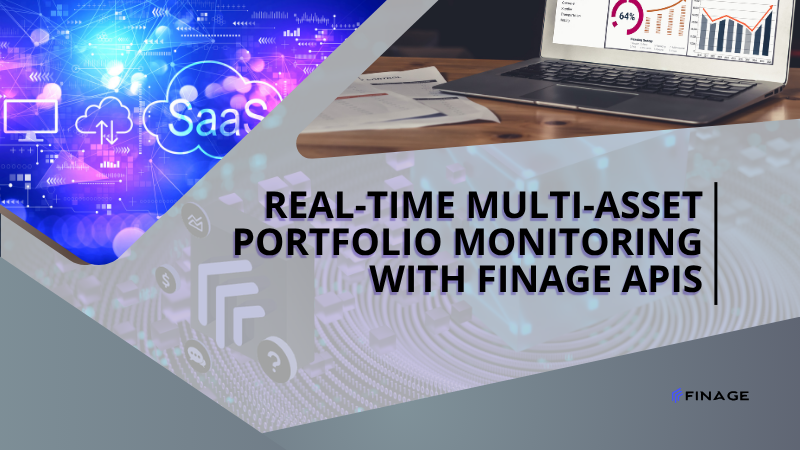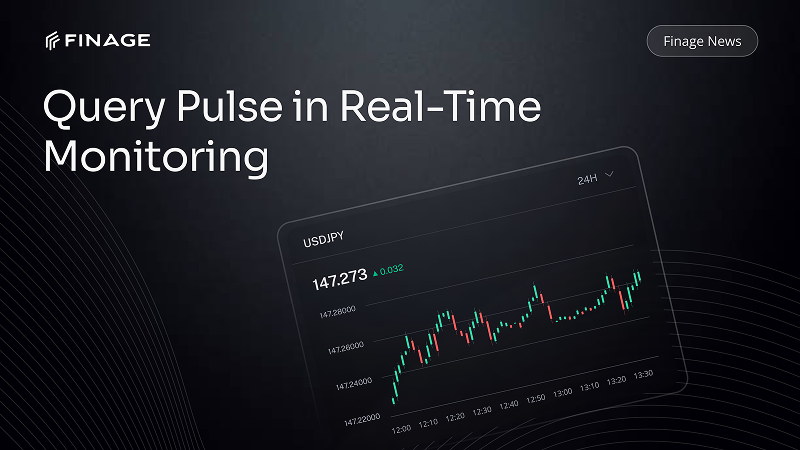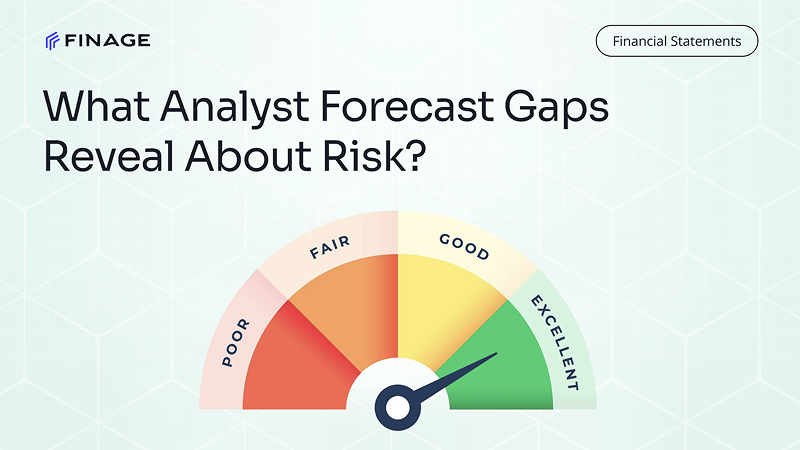Real-Time Multi-Asset Portfolio Monitoring with Finage APIs
8 min read • June 29, 2025

Introduction
As financial products become more sophisticated and investors diversify across asset classes, building a portfolio tracking experience that feels fast, unified, and trustworthy is no longer optional—it’s expected. Today’s users want to track stocks, crypto, forex, and even commodities from a single dashboard, in real time, with clarity and confidence.
That requires data that’s accurate, cross-asset, and developer-friendly.
In this guide, we’ll explore how to use Finage APIs to power multi-asset portfolio monitoring, pulling in real-time data for a wide range of instruments. Whether you're building for retail investors, wealth managers, or institutional dashboards, we'll walk through the key data types, architecture decisions, and integration strategies you need to know.
Looking for an all-in-one feed for stocks, crypto, and FX? Finage provides unified endpoints that make multi-asset apps easier to build and scale.
Table of Contents
- Why Multi-Asset Tracking Matters
- What Real-Time Monitoring Requires Technically
- Supported Asset Classes via Finage APIs
- How to Structure Your Portfolio Data Layer
- Unified Display: Avoiding Data Fragmentation
- Real-Time Streaming with Finage WebSocket APIs
- Final Thoughts: Scaling Your Portfolio Features
1. Why Multi-Asset Tracking Matters
The investment landscape is no longer limited to traditional equities. Retail and institutional users alike now diversify across stocks, cryptocurrencies, foreign exchange (FX), indices, and even tokenized assets. For developers building fintech platforms, this shift creates both opportunity and complexity.
Users expect a centralized view of their financial world, even if their holdings are spread across different markets and currencies. They want to know their total portfolio value, asset allocation, and live performance—without switching apps or calculating manually. This is especially critical for:
- Retail investors managing stocks and crypto in tandem
- Wealth platforms serving clients with global portfolios
- Neobanks offering integrated investment dashboards
- Trading tools that cover both FX and equities in real time
Without real-time, multi-asset support, even the best-designed interface feels disconnected. Investors won’t trust delayed data or fragmented views. And as markets move faster, the tolerance for slow updates is shrinking.
That’s why building a unified, live portfolio layer—one that pulls from high-quality data sources across asset classes—is quickly becoming a core requirement. And this is where Finage offers a significant edge: its APIs are designed to serve stocks, crypto, FX, indices, and ETFs from a single developer ecosystem.
Want to see how many asset types Finage supports? Explore the full list of APIs in their developer documentation.
2. What Real-Time Monitoring Requires Technically
Creating a portfolio tracker that updates in real time isn’t just about fetching the latest prices—it’s about designing a system that handles continuous updates, integrates multiple data sources, and responds smoothly to market movement.
Here are the core technical challenges:
First, your system needs to fetch and sync live prices for every asset in the portfolio. That includes traditional equities, but also crypto tokens, FX pairs, and possibly indices. These assets trade on different timelines, in different formats, and through different venues. A unified API like Finage’s simplifies this by standardizing price formats and access methods across classes.
Second, you need persistent streaming. REST APIs can pull fresh prices periodically, but for true real-time responsiveness, WebSocket connections are essential. They keep your UI and backend in sync with the market without constant polling or latency overhead.
Next, you’ll need to calculate live portfolio value. This means multiplying holdings by real-time prices, converting across currencies, and aggregating totals—all on the fly. It also requires handling edge cases, like suspended stocks, illiquid tokens, or markets closed for trading.
Finally, you must minimize latency and error. Even small delays or incorrect conversions can lead users to distrust your data. Clean pricing, consistent currency formatting, and transparent updates are what set a reliable portfolio tool apart from a basic one.
Finage addresses these needs with multi-asset support through both REST and WebSocket APIs, optimized for live data delivery and cross-market consistency.
Whether you're syncing once per minute or streaming every tick, a clean architecture ensures your data layer supports the user experience, not the other way around.
3. Supported Asset Classes via Finage APIs
One of the main advantages of building on Finage is its multi-asset coverage. Rather than juggling different vendors or patching together disconnected feeds, you can access a broad range of asset classes through a single API ecosystem. This makes it easier to normalize data, streamline integrations, and scale as your app grows.
Finage currently supports the following asset classes:
- Equities (Stocks): U.S. and global exchanges, including delayed and real-time pricing.
- Cryptocurrencies: Major coins and tokens, with support for price, volume, and pair data.
- Foreign Exchange (FX): Real-time currency pair data for major and minor markets.
- ETFs and Indices: Performance tracking for global indices and exchange-traded funds.
- Commodities (optional plans): Pricing for gold, oil, and more, depending on data tier.
For developers, the value isn’t just the asset coverage—it’s the uniform response structure. Whether you're calling the crypto API or the equities API, you'll get consistent fields for price, symbol, volume, and timestamp. This means you can build once and apply logic across asset types without special-case code.
Combined with WebSocket streaming, this allows your portfolio dashboard to update token prices, FX rates, and equities in parallel, without delay or format mismatches.
4. How to Structure Your Portfolio Data Layer
Once you’ve chosen your data provider and asset types, the next step is to architect a portfolio layer that can scale and respond to live data. This structure sits between your frontend UI and the raw market feeds—it organizes, processes, and calculates portfolio metrics in real time.
At the core, you’ll need a system that maps each user’s holdings to live prices. This usually means storing quantities of each asset (e.g., 0.5 BTC, 20 shares of AAPL, €1,000 in EUR/USD) and continuously updating their values based on real-time feed data. Each time a price update comes in, you recalculate the value of the relevant assets and refresh the totals.
To simplify this process, many apps create a portfolio “state object” that includes:
- The user’s asset list
- Latest prices (from a cache or stream)
- Currency conversions (especially for multi-currency portfolios)
- Aggregated metrics: total value, change over time, allocation percentages
By organizing data this way, you can easily run portfolio-level calculations, generate charts, or trigger UI refreshes whenever specific thresholds are crossed (e.g., portfolio drops by 5%, BTC hits $60k).
Using Finage’s real-time APIs, your backend can listen to price updates and feed them directly into this layer, updating only what’s changed, reducing unnecessary load, and keeping things in sync.
Structuring your data layer well from the start prevents lag, enables smarter alerts, and improves confidence for users managing real capital.
5. Unified Display — Avoiding Data Fragmentation
Real-time data is only as useful as its presentation. For multi-asset platforms, one of the biggest challenges isn’t getting the data—it’s displaying it in a way that feels consistent, intuitive, and trustworthy across asset types.
Users expect their portfolio to behave like a single financial unit, even if it contains radically different instruments. That means your frontend needs to normalize the experience: consistent formatting, aligned timestamps, unified currency display, and responsive updates across the board.
To avoid fragmentation:
- Use consistent units and labels for price and volume. Stocks may trade in shares, crypto in tokens, and FX in currency pairs—but your interface should smooth over those differences.
- Convert all values into a base currency, typically USD or the user’s local currency, for easier portfolio totals. Finage’s FX endpoints help with this.
- Align timestamps so users don’t see crypto updating in real time while equities lag behind. If some data is delayed, clearly label it.
By leveraging Finage APIs, you can standardize your data layer before it reaches the UI. All asset classes use compatible formats, so you don’t have to write custom render logic for every new feed.
The end result is a dashboard that feels cohesive—one where a user can scroll from Bitcoin to Tesla to EUR/USD without friction or confusion.
Clarity builds trust. A fragmented UI can make even accurate data feel unreliable, while a unified design reinforces confidence in every update.
6. Real-Time Streaming with Finage WebSocket APIs
To give users a truly responsive experience, you’ll need more than periodic API calls—you’ll need real-time streaming. This is especially true when tracking assets like crypto or FX, where prices shift every second and user expectations are high.
Finage offers WebSocket APIs that allow you to subscribe to live data across multiple asset types. Once connected, your app can receive updates for every price tick, without the overhead of continuous REST polling.
Here’s what makes Finage WebSockets especially useful for portfolio tracking:
- Multi-asset support: Subscribe to stocks, cryptocurrencies, and currency pairs in one connection.
- Efficient messaging: Only receive data for symbols you care about—ideal for scaling across many users.
- Low-latency delivery: Get updates within milliseconds of market movement, reducing UI lag.
- Structured responses: Standardized formats make it easy to parse and feed into your portfolio engine.
With WebSockets, your backend can cache prices for each symbol a user holds and push only the changes that affect their portfolio. This reduces bandwidth and ensures each user sees accurate, current values in real time.
You might choose to combine this with REST endpoints for startup sync (loading yesterday’s close, opening prices, etc.), then switch to streaming for ongoing updates.
Finage WebSockets help you build the kind of modern fintech experience users now expect—fast, smooth, and always in sync with the market.
7. Final Thoughts — Scaling Your Portfolio Features
Building a multi-asset portfolio tracker is no longer a niche feature—it’s a baseline expectation. Users demand visibility across markets, and they expect their dashboards to reflect real-time changes with precision and clarity. Delivering that experience starts with smart data decisions.
With Finage, developers can integrate real-time price feeds across stocks, crypto, FX, and more—all through a unified API framework. This reduces complexity, speeds up development, and ensures consistency across asset classes.
Whether you’re building a lightweight tracker or a full-featured investment platform, Finage helps you move from fragmented data to seamless portfolio intelligence. Start with the stock API, add crypto pricing, and connect live feeds through WebSocket streaming—all from one platform.
For deeper implementation insight, this guide to real-time finance apps breaks down architecture patterns that scale from 100 to 100,000 users.
You can get your Real-Time and Historical Market Data with a free API key.
Build with us today!
Claim Your Free API Key Today
Access stock, forex and crypto market data with a free API key—no credit card required.

Stay Informed, Stay Ahead
Finage Blog: Data-Driven Insights & Ideas
Discover company news, announcements, updates, guides and more

.png)
